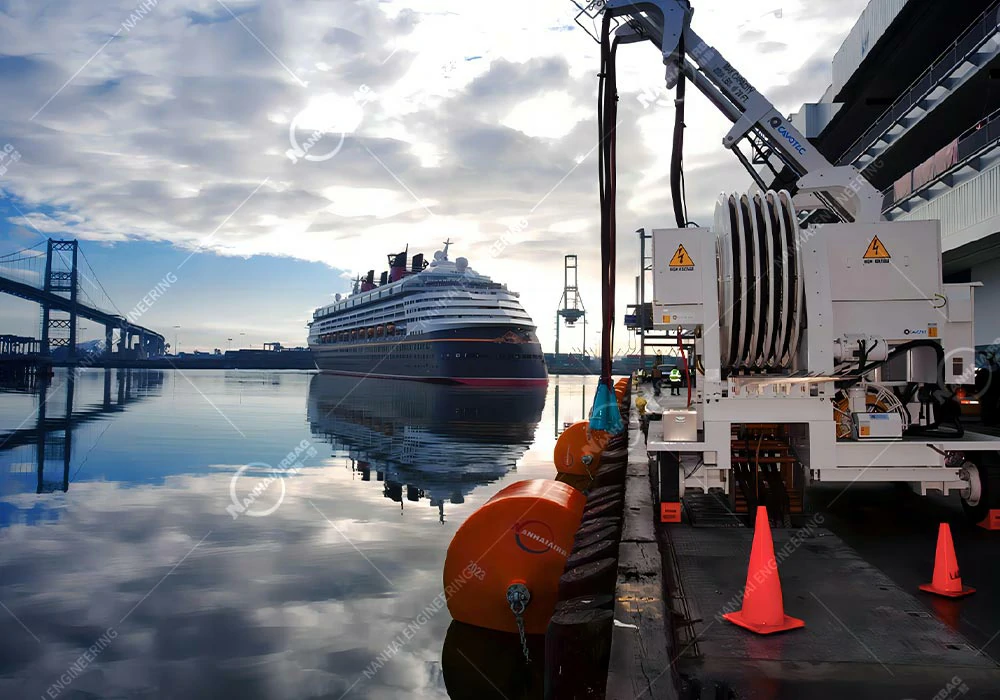Key points of Ship Launching airbags repair operation steps
07/09/2025Element vs Cone vs Cell Fender: What’s the Difference?
07/10/2025Tips for Choosing Marine Fenders
How to Select the Right Marine Fenders for Your Vessel or Port
Why Choosing the Right Marine Fender Matters
Marine fenders are essential safety tools used to absorb kinetic energy during vessel berthing. They act as a cushion between a ship and the dock or between two vessels, preventing direct contact and structural damage.
A poor fender choice may lead to hull damage, increased maintenance costs, or even docking accidents. Whether you’re a yacht owner, port engineer, or fleet manager, knowing how to choose the right fender is a must.

Common Types of Marine Fenders
1. Cylindrical Fenders
Easy to install and ideal for smaller vessels and docks. They offer simple but effective energy absorption.
2. Cone and Arch Fenders
Used at commercial docks. Designed for high energy absorption and long service life.
3. Pneumatic Fenders
Ideal for ship-to-ship (STS) or ship-to-dock operations. These fenders use compressed air to absorb shock and are highly flexible.
4. Foam-Filled Fenders
Made of resilient foam and outer polyurethane layer. Great for high-impact berthing with low maintenance.
5. Yacht Fenders
Sleek, portable, and lightweight – perfect for private boats and leisure vessels.
Key Considerations When Choosing Marine Fenders
1. Vessel Type and Size
Large vessels require larger fenders with high energy absorption. For yachts or fishing boats, smaller and more flexible fenders may suffice.
2. Berthing Conditions
Open-sea berths need robust fenders (e.g., cone or pneumatic) to withstand rough wave action. Calm harbor areas may need only basic cylindrical fenders.
3. Fender Material
- Rubber: Durable and cost-effective
- Foam: Lightweight and highly elastic
- Polyurethane Skin: Scratch-resistant and UV-stable
4. Installation & Maintenance
Choose a system that’s easy to deploy and inspect. Foam-filled fenders require less air-checking than pneumatic types.
Recommended High-Performance Marine Fenders by NANHAI
At NANHAI, we focus on marine safety solutions and offer a selection of high-value marine fenders. Here are three products we recommend:
1. Yacht Fenders
These are perfect for leisure vessels. They use compressed air internally to provide a soft and controlled cushioning effect during docking. Their light weight and easy handling make them ideal for yachts, enhancing both safety and convenience.
2. Foam-Filled Marine Fenders
A popular choice in ports and offshore platforms. These fenders use a high-resilience foam core that can absorb strong impacts without deflation. Even under heavy collisions, they transform impact energy effectively and reduce the chance of hull damage. Their self-floating design ensures easy deployment and long-lasting performance.
3. Pneumatic Floating Fenders
Ideal for ship-to-ship transfers, large vessels, and bulk carriers. These fenders offer excellent shock absorption and durability in various sea conditions.
Placement and Quantity Tips
- Minimum of 3 fenders per side: bow, stern, and midship
- Spacing: Use one fender every 10 feet of vessel length
- Position: Align with the most vulnerable parts of the hull
- Storage: Keep fenders dry and out of sunlight when not in use
Final Thoughts
Choosing the right marine fenders isn’t just a technical decision—it directly impacts vessel safety, operational efficiency, and long-term cost savings.
Whether you’re outfitting a cargo port or a luxury yacht, NANHAI is ready to provide reliable marine fender solutions tailored to your needs.
